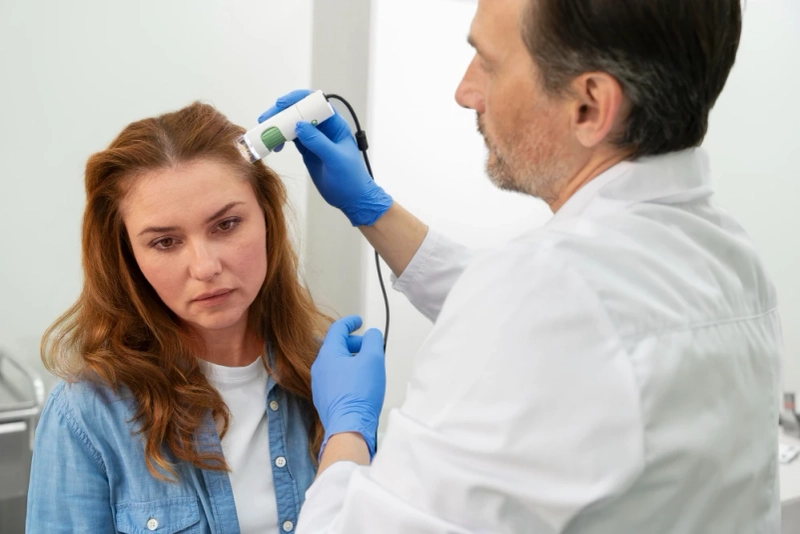Treatment for Trichotillomania is a challenging condition marked by strong urges to pull out one’s hair, often leading to distress and impairment. Effective treatment focuses primarily on behavioral therapies that teach individuals to recognize triggers and replace hair-pulling with healthier actions. Habit reversal training is the most widely recommended approach and has shown significant success in managing symptoms.
In many cases, treatment may also include medication to support behavioral interventions, especially when the disorder is severe or accompanied by other mental health issues. Because trichotillomania tends to be chronic with fluctuating symptoms, ongoing support and tailored strategies are important for long-term management.
Understanding how to identify and manage urges can help reduce the frequency and impact of hair-pulling. This article explores key treatment options, providing clear information to guide those affected toward effective solutions.
Evidence-Based Treatments for Trichotillomania
Treatment options focus on behavioral strategies and medications aimed at reducing hair-pulling urges and managing symptoms. Research supports specific psychological approaches as the primary interventions, with some pharmacological agents showing potential but limited by the current evidence base.
Cognitive Behavioral Therapy Approaches
Cognitive Behavioral Therapy (CBT) targets the thoughts and behaviors linked to hair-pulling. It involves identifying triggers and cognitive distortions that contribute to the urge to pull hair.
CBT helps patients develop coping skills and alternative responses to urges. Techniques include thought monitoring, stimulus control, and stress management. These methods work to alter the patterns that sustain trichotillomania.
CBT’s individualized nature allows tailoring strategies to the patient’s needs. However, therapy requires consistent participation and practice to maintain long-term benefits. Clinical studies show CBT significantly reduces symptoms in many cases.
Habit Reversal Training
Habit Reversal Training (HRT) is a specific, evidence-backed behavioral intervention. It teaches patients to recognize hair-pulling urges and replace them with competing responses, such as clenching fists or engaging hands in other tasks.
HRT includes awareness training, developing alternative responses, and strategies to prevent relapse. Research identifies HRT as the most effective behavioral treatment for trichotillomania, with robust evidence supporting lasting symptom reduction.
HRT is often delivered as part of a broader Cognitive Behavioral Therapy program. It may be combined with other therapeutic techniques to target the various maintenance factors of hair-pulling.
Pharmacological Interventions
Medications have a secondary role in treating trichotillomania. Several drugs, including selective serotonin reuptake inhibitors (SSRIs), antipsychotics, and N-acetylcysteine (NAC), show some efficacy in controlled trials.
No medication is officially approved for trichotillomania, and evidence from clinical trials remains preliminary. Antipsychotics and NAC have shown potential benefits but require further research to confirm long-term effectiveness.
Pharmacological treatment is often considered when behavioral therapies are insufficient or unavailable. It may be prescribed alongside therapy to manage comorbid conditions or reduce symptoms.
Lifestyle Strategies and Long-Term Management
Effective long-term management of trichotillomania involves a combination of ongoing support, practical self-help techniques, and strategies to prevent relapse. Success often depends on consistent use of multiple approaches tailored to individual needs.
Support Groups and Community Resources
Connection with others facing trichotillomania can provide emotional support and practical advice. Support groups, both in-person and online, offer a space to share experiences and coping strategies.
Community resources may include therapy groups guided by mental health professionals specializing in hair-pulling disorder. They foster accountability and reduce feelings of isolation.
Peer support apps and forums can also help track progress and provide encouragement. Some organizations partner with technology tools like smartwatches that remind users to resist pulling urges, enhancing self-awareness.
Self-Help Techniques
Self-help methods focus on increasing awareness of hair-pulling triggers and replacing the behavior with healthier habits. Journaling urges and noting situations that provoke pulling is a common step.
Techniques such as habit reversal training teach individuals to perform a competing action, like clenching fists or squeezing a stress ball when urges arise.
Environmental modifications help too, for example, wearing gloves, covering hair with hats, or using fidget toys. These make pulling more difficult or redirect attention.
Mindfulness and relaxation exercises can reduce stress, which often exacerbates urges. Regular practice strengthens emotional regulation over time.
Relapse Prevention
Relapse is common, so preparing for it is crucial. Identifying high-risk situations—stress, boredom, or fatigue—allows individuals to plan proactive coping strategies.
Maintaining routines that include sleep hygiene, exercise, and stress management decreases vulnerability. Skill reinforcement, such as regular practice of habit reversal, helps maintain gains.
Tracking progress with apps or journals supports early identification of increased urges, prompting timely intervention.
Professional follow-up and booster therapy sessions improve long-term outcomes by adjusting techniques as needed and addressing new challenges.


